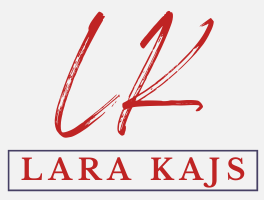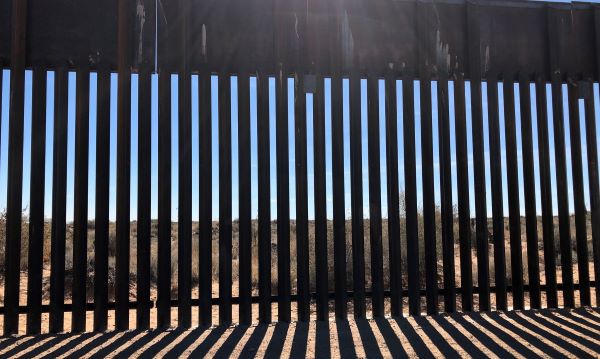12 June 2023 ~
After three years of rights violations, the emergency health authority known as Title 42 has officially ended, and a new border initiative, complete with its own complications and criticisms, has begun. The challenge for the Biden administration will be to manage the crisis at the southern US border in the most humane manner, while at the same time adhering to international human rights law.
Seeking Asylum is a Basic Human Right
People have the right to be safe in their own country, but when that is an impossibility, they have the right to seek safety, to seek asylum, elsewhere. Since its enactment in March 2020, Title 42 was used 2.8 million times to deny asylum access at the US-Mexico border. And while many found the policy to be one way to prevent migrants from entering the country irregularly, it also violated international law when it outright blocked the ability to seek asylum.
Seeking asylum is a basic human right that was passed into international law after the atrocities committed during WWII. However, Congress adopted key provisions of the Geneva Convention regarding refugees and asylum into US immigration law when it passed the 1980 US Refugee Act. Simply put… seeking asylum is protected by law and it cannot be denied.
Title 8
The end of Title 42 in May means a return to Title 8, the previous border management policy. For the tens of thousands of migrants waiting in Mexico in overcrowded shelters, or on the streets, vulnerable to exploitation and violence, the return of Title 8 may be a safety net. But for many, it will mean removal and being banned from reentering the US for at least five years.
Under Title 8, individuals claiming asylum cannot be turned away or deported without first being screened. Those who are cleared as presenting a claim of “credible fear” of persecution, will be allowed to stay in the US as their cases are presented in immigration court. Those who are not cleared will be deported.
CBP One
The Biden administration has implemented a combination of new asylum rules and legal pathways. These processes are intended to discourage migrants from crossing the border irregularly and to prevent an increase in people seeking asylum along the border. The new border initiative is meant to encourage migrants to apply for asylum online through a new measure – the CBP One Mobile Application.
At the launch, there were immediate concerns regarding the app’s accessibility. Concerns included limited phone and internet access, language accessibility, and the difficulty in securing a CBP One appointment, to name a few. There are also reports of people being turned away because they did not apply through the app or online first, before presenting themselves at the border. It is important to note that these are not people trying to sneak in. They are presenting themselves and trying to enter the country lawfully.
However, one of the chief grievances of the new asylum policy is the requirement that migrants transiting through another country en route to the US-Mexico border, a first attempt to seek protection from one of the other countries. Under the asylum policy, not requesting protection from another country first, disqualifies migrants from seeking asylum in the US. This approach is in direct conflict with the principles of international refugee law.
Admission Quotas
The US has been piloting the new border initiative to admit Ukrainian refugees for the past year. The “Uniting for Ukraine” initiative admitted some 300,000 Ukrainian refugees – thousands of whom had been trying to reach the US via Mexico. The initiative was expanded to include Venezuela, Haiti, Nicaragua, and Cuba, where 30,000 migrants per month (collectively) will be admitted to the US, provided individuals apply online first, have a financial sponsor, and arrive by air. Similarly, the US will allow in up to 100,000 people from Guatemala, El Salvador, and Honduras (collectively) provided they have family in the US and apply online. If the criteria are not met, border officials will deport individuals.
A key component of the new initiative is the willingness of Mexico to take back citizens of those countries who are caught trying to cross irregularly – as many as 30,000 per month. In return, Mexico will receive increased financial support in responding to the humanitarian needs of refugees and migrants, increased border and immigration personnel and support, media campaigns to counter smuggler misinformation,
FERM
Family Expedited Removal Management (FERM) is a process for families apprehended at the US-Mexico border. FERM will allow immigration officials to track the head of household, via a GPS ankle monitoring device. The measure also requires a curfew that will be enforced from 11 pm to 5 am. FERM will allow immigration officials to track persons in the US awaiting asylum court appearances and the outcomes. Immigration officials will attempt to determine within 30 days, whether a family can stay in the US or be deported. The program is being launched in Baltimore, Chicago, Newark, and Washington DC.
FERM was intended to replace the need to hold families in detention centers, a contentious practice the Biden administration declined to restore. No one wants to see “kids in cages” ever again.
Implications
There needs to be a more collaborative response between governments, communities, and organizations. Viable options for migrant care should include border reception stations staffed by asylum officers, trauma specialists, health professionals, and child welfare specialists. Reception stations should provide food, water, shelter, and transportation arrangements, so people can reunite with family or supporting communities while they wait for their immigration hearings.
Any decision to expel people to Mexico, or to return them to their home country should include assessing the risk they face as a result of being returned and must uphold the principle of non-refoulment – the prohibition of forced return of people to situations where their lives and safety are in danger.
Expanding safe and regular pathways and increasing refugee and migrant resettlement are needed and most welcomed. However, measures that restrict asylum access are deeply concerning. Policies and actions must be based on international law, and they must advance the protection and solutions for refugees and migrants.
The argument that the US is filled to capacity is baseless. Poland, a tiny country took in a million people in a few weeks as a result of the conflict in Ukraine. The United States is 31 times larger than Poland. We can do better.
One Final Thought…
Displacement cannot be solved by any one country, agency, or organization. Real progress will only be made through global collaborative efforts to address the causes of displacement and irregular migration.
With gratitude… Lara
Photo Credit: New Mexico Border by rmcspadden@biologicaldiversity.org is licensed under CC By -NC 2.0
#thinkingoutloud #larakajs #TOL #USMexicoBorder #asylum #refugees #migrants #displacement #CBPOneApp


1 comment